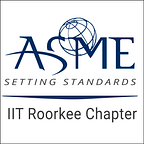E-WASTE — THE BURNING ISSUE
Ever since the beginning of this tech era, e-waste has been rising at an unprecedented rate. There has been no ground-breaking technology yet to tackle this issue. According to the international waste electrical and electronic equipment (WEEE) forum, 5.3 billion mobile phones will be thrown away in 2022. This is clearly a big issue and worth having a look at.
What is E-Waste?
E-waste stands for Electronic waste. It refers to discarded electronic accessories left with no ‘useful’ work for the user. Examples include mobile phones, Computers, televisions, VCRs, stereos, copiers, and fax machines. These wastes are usually not taken care of and are dumped with irresponsibility.
Above are a few examples, but e-waste can be seen everywhere, from microwaves to fans, smartphones to hard drives, DVDs to printers, and remote controls to treadmills. Thus they must be taken care of.
E-Waste Problems
Most e-waste consists of toxic metals like beryllium, mercury, lead, etc., which are problems for soil, water, air, and life forms as well. Dumping of e-waste leads to the leaching of these toxic materials into groundwater and nearby bodies, poisoning them. Dangers can come from the inhalation of toxic fumes and from the accumulation of chemicals in soil, water, and food.
Moreover, e-waste is difficult to decompose and keeps polluting the area for quite a time. The average per capita e-waste generation is 7.3 kg. Global e-waste generation is around 53.6 metric tons, and only 17.4% is recycled. These facts clearly indicate how big the problem is.
Solutions
In the case of e-waste, recycling is the best weapon available. Most of those toxic materials can be obtained from scrap and reused further. Every time we recycle our electronics, we prevent our E-waste from leaching toxic metals into our groundwater. We are also saving the resources that could have been used to mine those minerals elsewhere.
It’s quite funny that we consider these materials e-waste. However, they can be recycled but are thrown away irresponsibly instead. With recyclers like Great Lakes Electronic Corporation (GLER), there are solutions, it’s just that we have to segregate our waste and give them to these organizations.
Conclusion
Hence it is we who are responsible for this issue as well as we are for other issues. Humans have been making new and new innovations to make our lives easy, but we neglect the aftereffects of these every time and end up discussing the solutions to those problems in blogs like this. It’s about time that we become serious about these issues and take lessons from our past mistakes. Otherwise, we will meet again in another blog to discuss another new problem.
Shashank Trivedi is the writer of this article. Views expressed, and information provided belong solely to the author.
